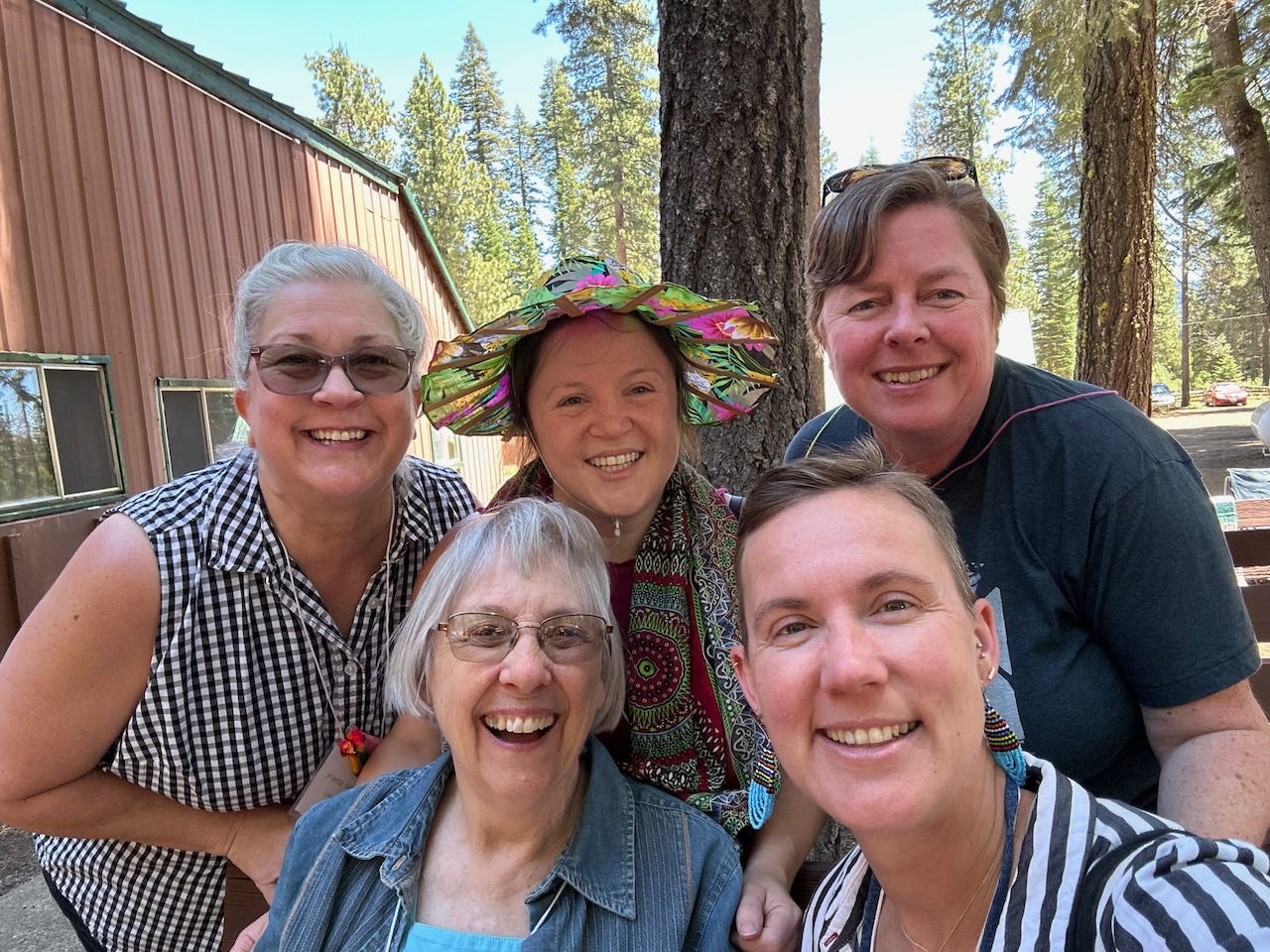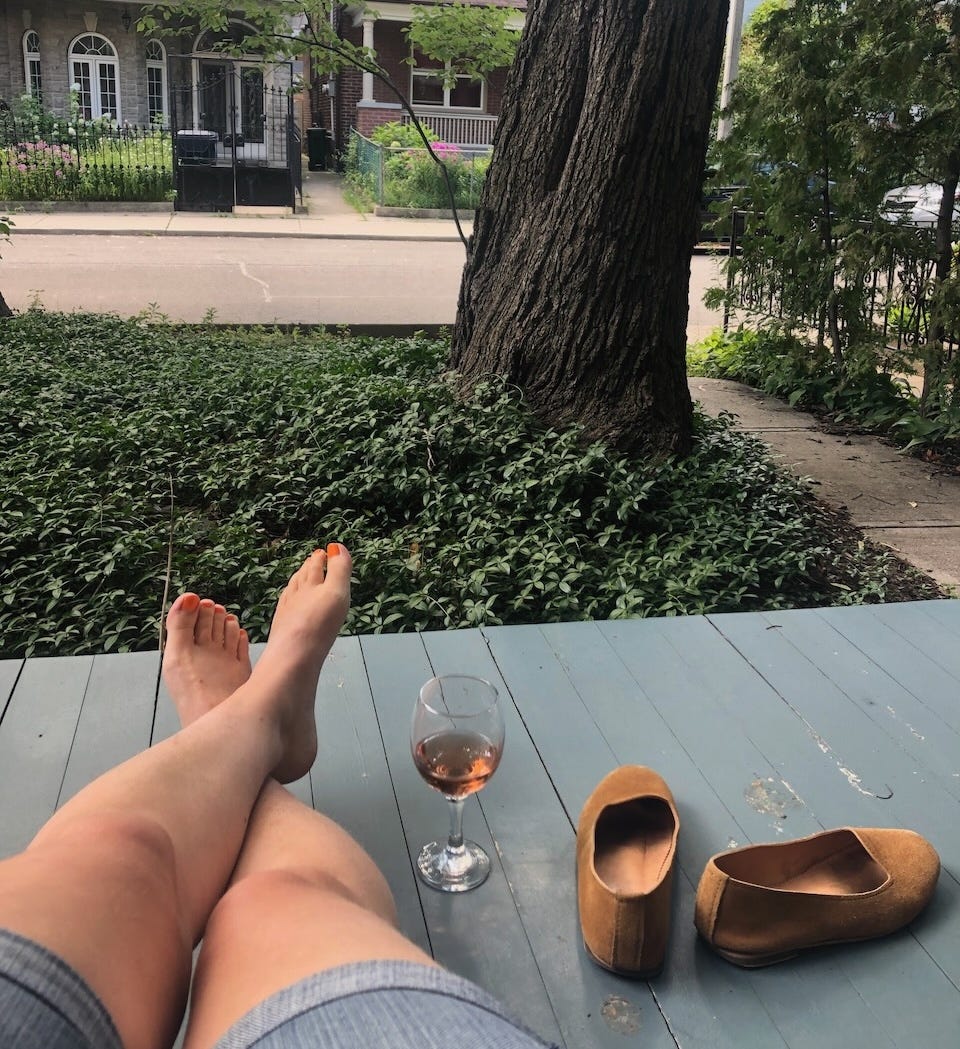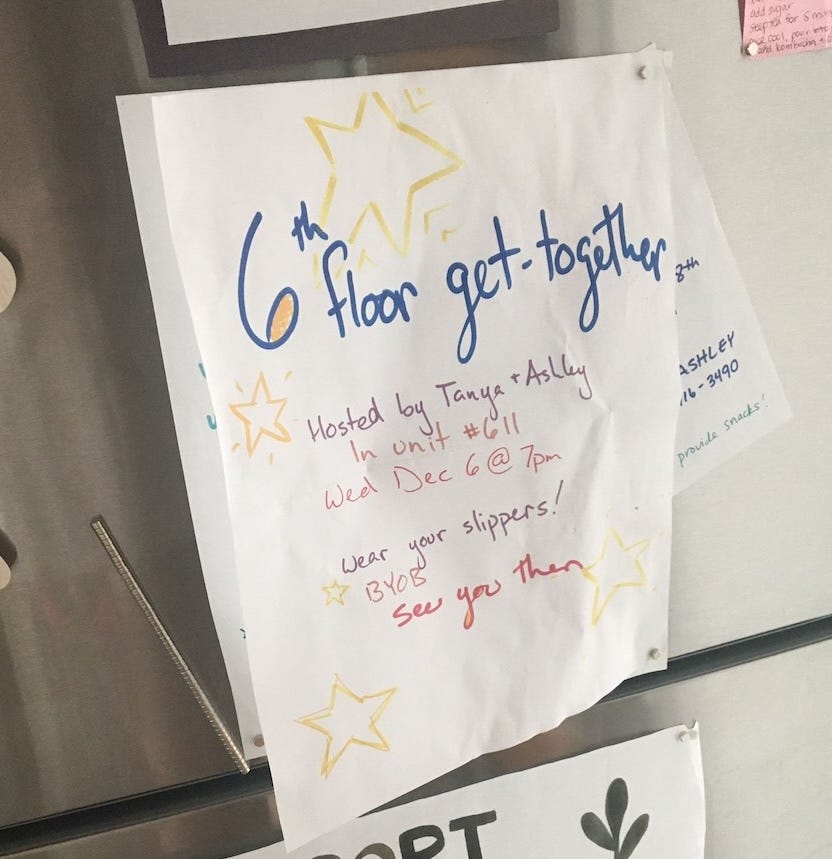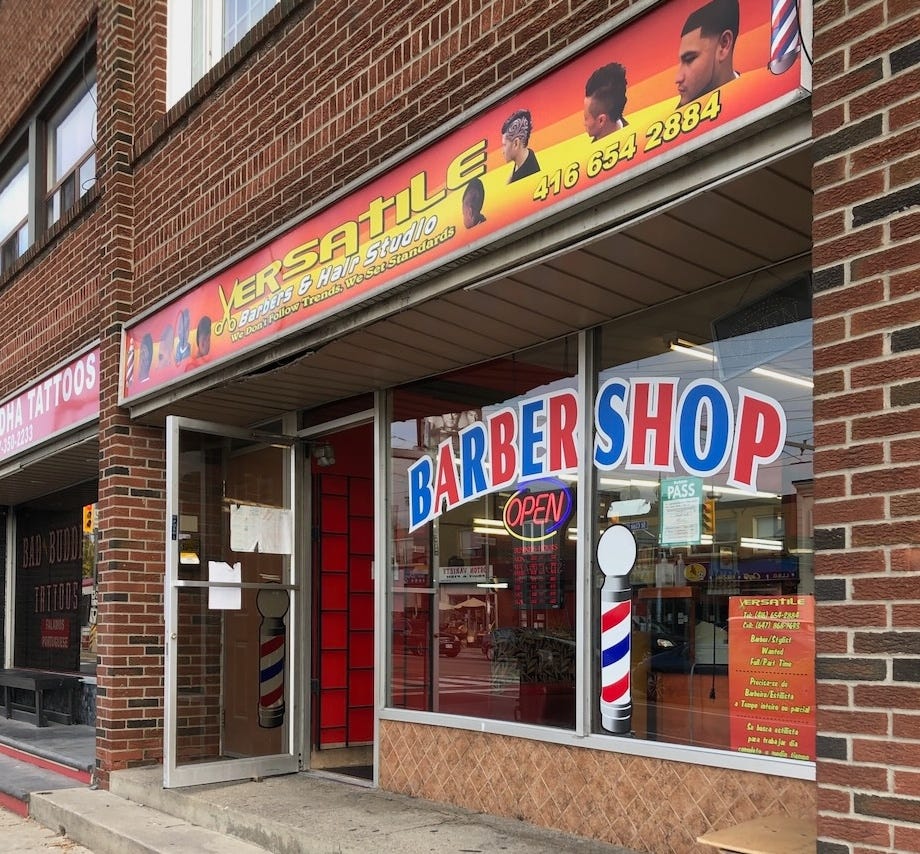Won't you be my neighbour?
The radical act of hanging out on your front porch, and knowing the people on your floor or block.
One of my favourite stories of serendipity in the past few years is how my cousin, by chance, moved into the house right across the street from one of my childhood friends. They don’t live in a city where any of us grew up, increasing the “what are the odds?” feeling of it. My cousin Molly was moving things into her new house, and she recognized the tall, blond woman in the front yard across the street from summer visits to my house. As soon as they confirmed the connection, I got texts from both of them sharing the fun news!
When I saw Molly last month, she told me how she and her partner James had recently turned their dying lawn into a spectacular drought-friendly rock and succulent garden. Since doing up their front yard and adding lounge chairs to the front porch, James often retreats there to hang out at the end of the workday. My friend Sarah’s kids come by to look at the succulents, and James says he’s meeting more neighbours than he ever did before, with people stopping by to comment on the yard, lament the loss of the tree that had to be removed from the yard, and introduce their dogs. Front porches, compared with backyards that are often behind privacy fences, invite “weak tie” interactions that, as I’ve written about, can help us feel like we belong and can be tiny bright spots in our day.
In her book Hanging Out: The Radical Power of Killing Time, Sheila Liming details how suburbanization and the reduction of informal, non-commercialized public spaces drive people to hang out in private places. She writes, “If you don't have a local park that your children can walk to, you wind up building a playset in your own backyard […]; there, your children can play, but they can't gain exposure to the kinds of social challenges that are the unique provenance of interactions between strangers. Meanwhile, your neighbors are also building their own playsets in their own backyards. A neighborhood becomes an archipelago of backyard playsets.” (pg 129)
By spending time in their front yards, James, Molly, and Sarah are actively resisting this closing off and increasing the possibility of casual moments of hanging out.
“Wear your slippers”
Ashley and I moved into our condo building in the spring of 2021. By that summer, we were emerging from deep pandemic lockdown, and people were primed to mingle and meet people. (I wrote about how some neighbours advertised for cat-sitting swaps.)
That winter, we held a happy hour for our fellow 6th-floor residents, most of whom we had not met yet. “BYOB and wear your slippers,” our handmade flyer said. We slide one beneath the door of each of the units. A lively group of people came over, and at the end of the evening, the 6th-floor group chat was created. We’ve held that party each December since then – a low-key and fun hangout – meeting new people each time, actively disproving that stereotype that no one in condos knows each other.
The group chat is periodically active with requests for an iron or a wrench, wishes of happy holidays, and to confirm that, yes, the power is off in ALL our units. This is a simple way to encourage sharing, reducing the need for everyone to buy their own ladder, and a way to check in on each other and acknowledge our interconnectedness on this floor in a building in the middle of a big city.
Living Near Friends
In a post last year, I shared how when Ashley and I were looking for a home, we intentionally used the same realtor as my friend Leah. Our criteria was that we wanted to be “within a 10-minute walk of each other.” We ended up in the same building, just two flights of stairs apart.
This puts us within “come on by” distance of each other. Without living together, we get to intertwine our lives in a special way, seeing each other for a quick hug before she goes to the office or checking on each other’s plants/cats when one is away. When I saw her Hello Fresh box in the lobby, I brought it up to her door. She let me use her balcony this morning while mine is under renovation.

Being Seen and Known
Knowing my neighbours, and having a best friend in the building, means that there can be more spontaneous interactions. Yesterday, I saw Leah as I was walking down our street, and she was walking up it. We smiled and hugged and went on our way. Last week, I recognized Noah on the sidewalk across the street, and we had a fun, rambling conversation for a few minutes. Jim and Dom honked and waved to me from their car. One neighbour puts on free front yard concerts in the summer, and earlier this month, a group of people coordinated a clothing swap; both were free, meaning we didn’t need to purchase something to hang out with people in the area.
Each small interaction with a neighbour reminds me and reinforces that here I am known and seen. In some way, because they know me and I know them, these people have my back, and we have a shared interest in our community. In a society and political climate that constantly highlights and preys on our differences, and in an economic environment that pushes us to spend time in private cars and backyards, it can be a radical act to get to know a neighbour, acknowledge that your lives are intertwined, and be friendly.
Do you know your neighbours? Where do you meet each other?
Friendship Pro-Tip
“Being busy doesn’t mean your friendships have to move to the back burner. In fact being busy can be an opportunity to reconfigure how friendships fit into our lives, it just might require some creative thinking and honesty.” - Great post by friendship expert Dr. Marisa G Franco.
Yay Friends Moment of the Month








